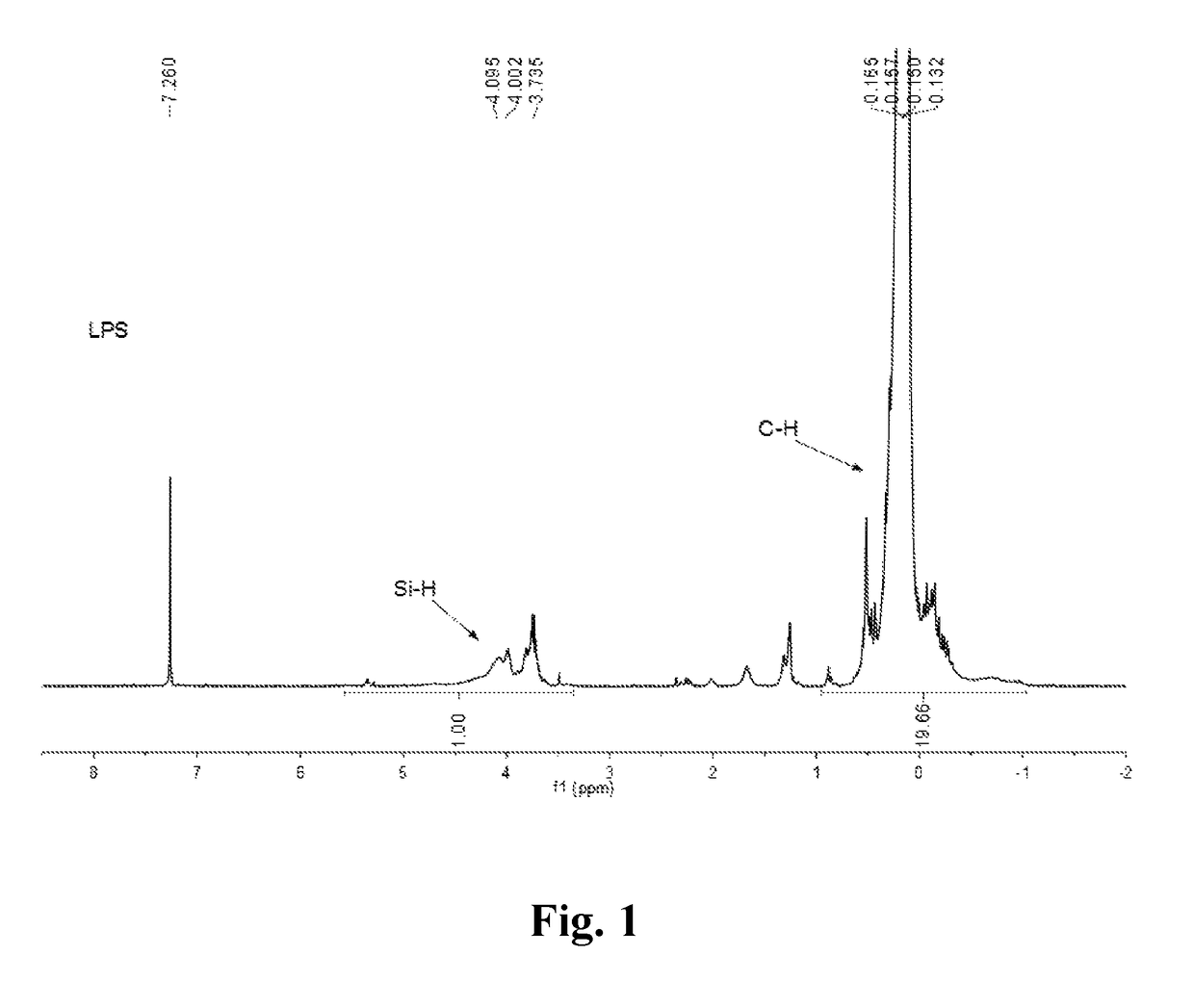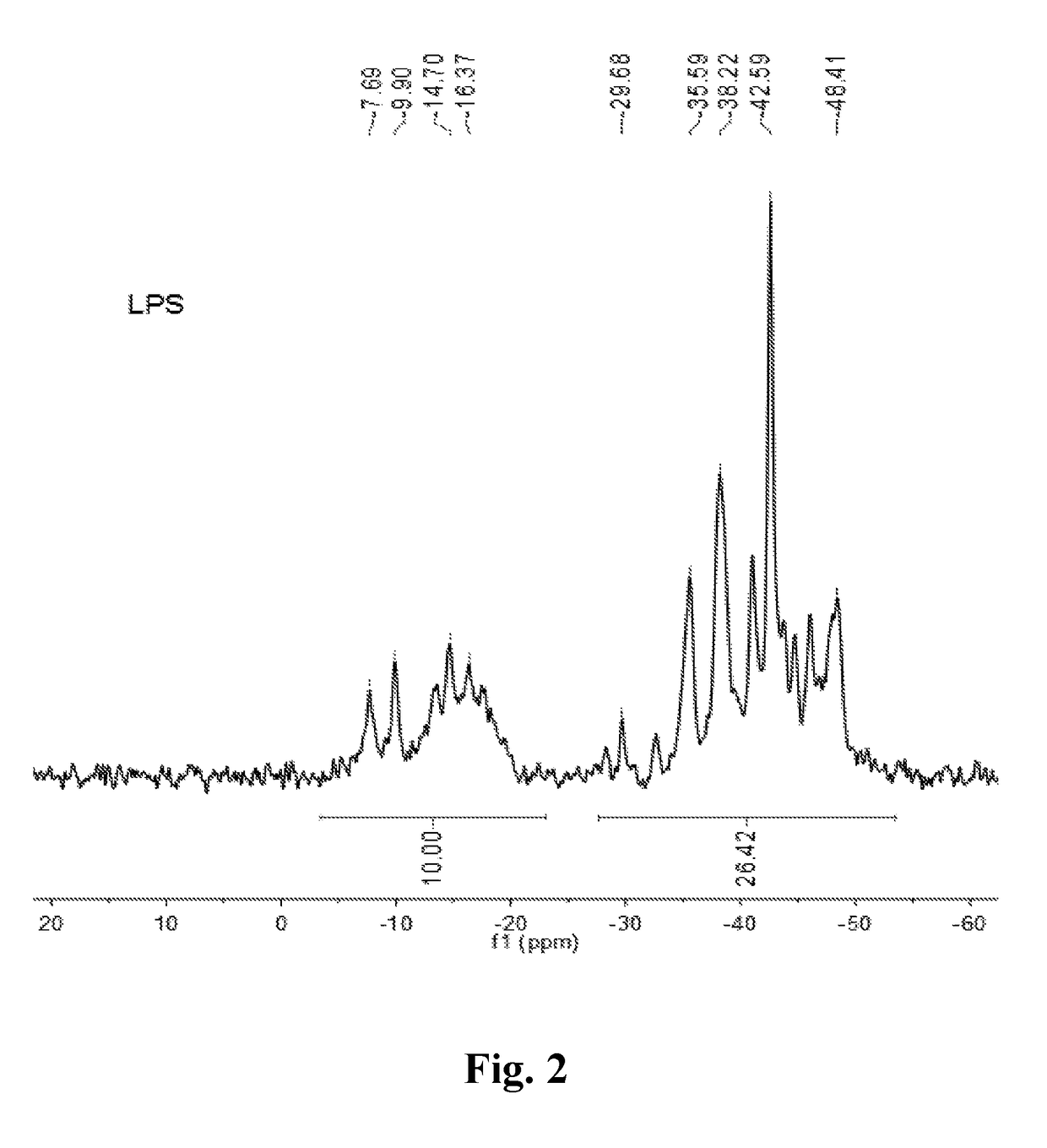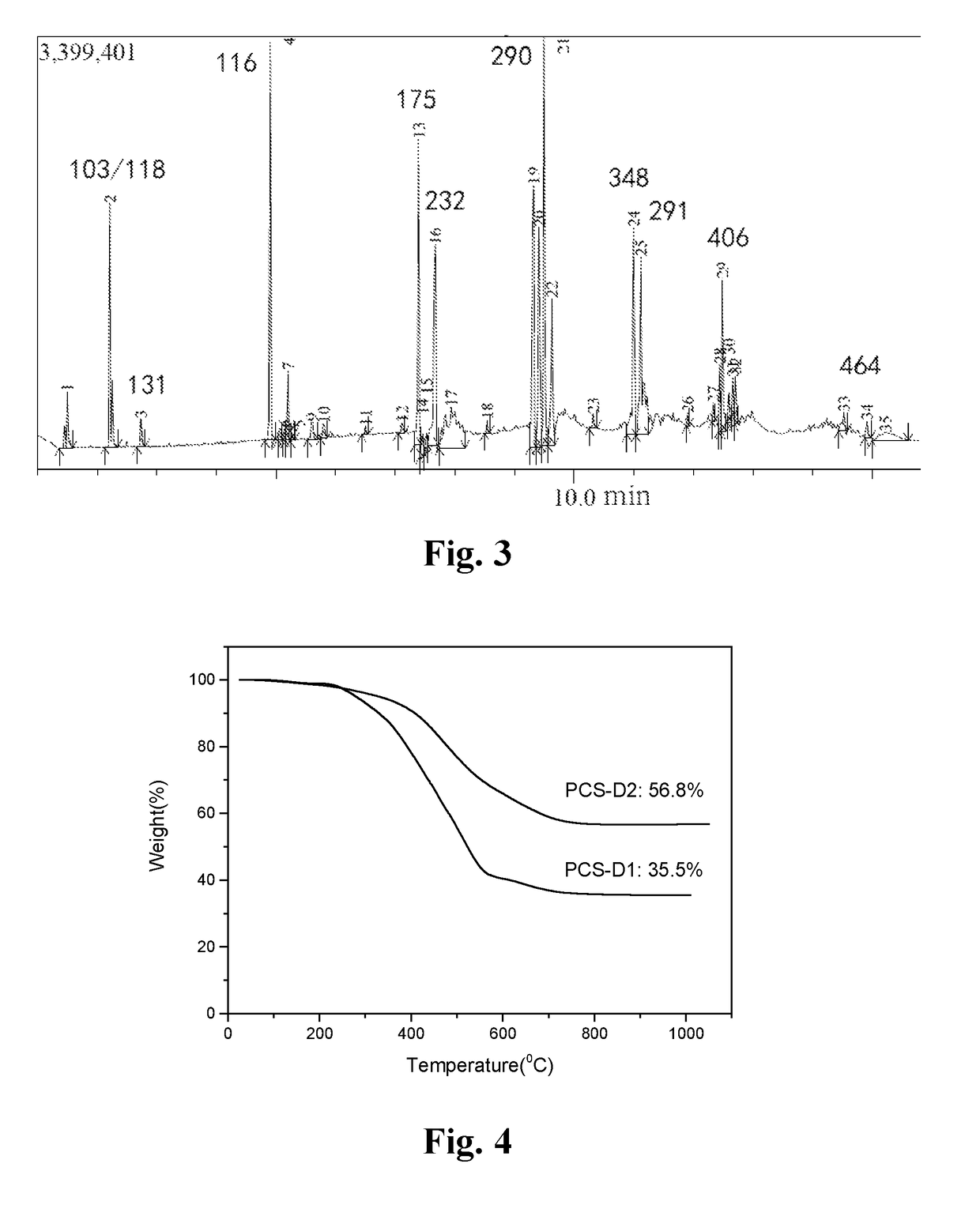Method for preparing polycarbosilane by catalytic rearranging
a technology of catalytic rearranging and polycarbosilane, which is applied in the direction of carbides, inorganic chemistry, carbon compounds, etc., can solve the problems of high cost, high o content, and large investmen
- Summary
- Abstract
- Description
- Claims
- Application Information
AI Technical Summary
Benefits of technology
Problems solved by technology
Method used
Image
Examples
preparation example 1 (
Preparation of the Raw Material LPS)
[0047]The solid PDMS powder (1200 g) was added to a 3 L three-necked reactor, evacuated and purged with argon or nitrogen to remove air three times, and then under argon gas stream protection, heated with heating units up to 390-420° C., thermal decomposed and distilled to give a colorless, transparent liquid silane (LPS) (about 1080 g). The 1H-NMR, 29Si-NMR, GC-MS and FTIR spectra are shown in FIG. 1-3 and FIG. 10(a), respectively. The result of the characterization indicates that LPS is a complex mixture composed of more than 20 kinds of silane—carbosilane ring molecules and small amounts of linear small molecules. The molecular structure can be represented by [(SiMe2)0.7 (CH2SiMeH)0.3].
example 1
[0051]Experimental procedures: (1) The synthesis apparatus for decomposition and rearrangement under atmospheric pressure was evacuated and refilled with high purity nitrogen three times; (2) Under the protection of high purity nitrogen, 190 g of the LPS prepared in PREPARATION EXAMPLE 1 was added in the reactor, and then introducing 0.38 g of the B(C6F5)3 catalyst (0.20 wt % with respect to the amount of LPS) with stirring; (3) Programmed temperature, which heating up to 395° C. by 35 hours, and reacting for 5 hours at the temperature, the total reaction time was 40 hours; (6) Cooled to room temperature, 131.89 g of a crude product was obtained, and then the crude product was heated to 370° C. and the low molecular weight components were removed by distillation; (7) after cooled to room temperature, 122.31 g of a product was obtained.
[0052]The synthesis yield of the PCS crude product of this example is 69.4%, the yield of the final product (PCS-S1) is 64.4%. As shown in the thermal...
example 2
[0054]Experimental procedures: (1) The synthesis apparatus for decomposition and rearrangement under atmospheric pressure was evacuated and refilled with high purity nitrogen three times; (2) Under the protection of high purity nitrogen, 190 g of the LPS prepared in PREPARATION EXAMPLE 1 was added in the reactor, and then introducing 0.38 g of the B(C6F5)3 catalyst (0.20 wt % with respect to the amount of LPS) with stirring; (3) Programmed temperature, which heating up to 395° C. by 23.5 hours, and reacting for 4 hours at the temperature, the total reaction time was 27.5 hours; (6) The low molecular weight components were removed by distillation at 370° C.; (7) After cooled to room temperature, 113.05 g of a product (PCS-S2) was obtained, which the yield of 59.5% and the ceramic yield of 70.5%.
PUM
| Property | Measurement | Unit |
|---|---|---|
| reaction temperature | aaaaa | aaaaa |
| reaction time | aaaaa | aaaaa |
| reaction temperature | aaaaa | aaaaa |
Abstract
Description
Claims
Application Information
 Login to View More
Login to View More - R&D
- Intellectual Property
- Life Sciences
- Materials
- Tech Scout
- Unparalleled Data Quality
- Higher Quality Content
- 60% Fewer Hallucinations
Browse by: Latest US Patents, China's latest patents, Technical Efficacy Thesaurus, Application Domain, Technology Topic, Popular Technical Reports.
© 2025 PatSnap. All rights reserved.Legal|Privacy policy|Modern Slavery Act Transparency Statement|Sitemap|About US| Contact US: help@patsnap.com



